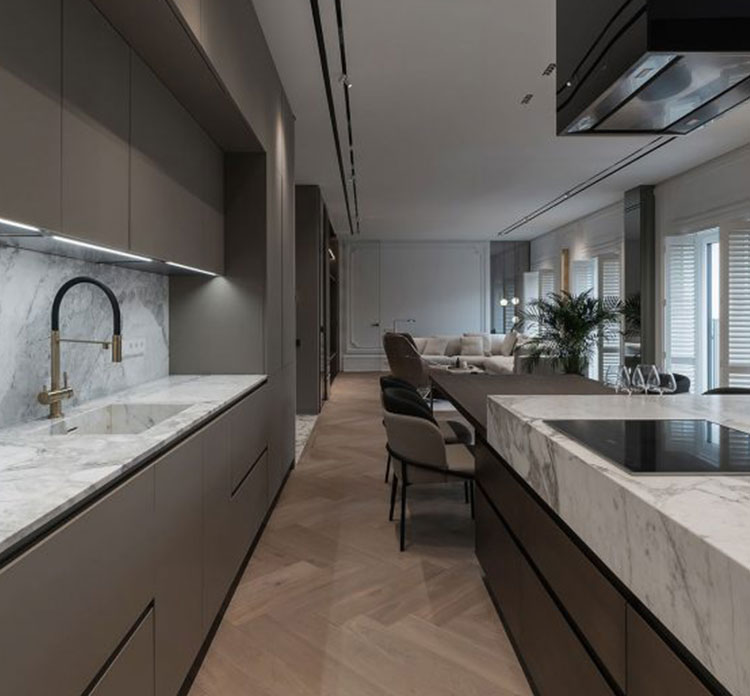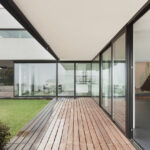Maximizing Small Spaces: Practical Tips for Functional and Stylish Homes
In today’s world, small living spaces are becoming increasingly common, especially in urban areas. The challenge is creating a space that is both functional and stylish without feeling cramped. With the right approach, even the tiniest apartment can be transformed into a comfortable, well-organized haven. Here’s how to make the most out of small-space living:
Furniture and Storage Solutions
Choosing the Right Furniture Pieces for Small Spaces:
The key to making a small space work is selecting furniture that fits the scale of the room. Opt for sleek, low-profile pieces that won’t overwhelm the space. Avoid bulky, oversized items. Choose furniture that has clean lines and light tones to keep the room open and airy.
Multifunctional Furniture:
In a small home, every piece of furniture should serve more than one purpose. Sofa beds, extendable dining tables, and ottomans with storage are all great choices. For example, a wall-mounted desk can double as a dining table, and a bench with hidden storage can provide seating while storing blankets or books.
Clever Storage Ideas:
Maximize every nook and cranny in your home. Consider using under-bed storage or installing floor-to-ceiling shelving units. Look for furniture that incorporates storage, such as beds with built-in drawers or coffee tables with storage underneath. Hanging racks, wall-mounted cabinets, and fold-out shelves can help save space.
Color Psychology and Small Spaces
Using Color to Make a Space Feel Larger:
Light colors, particularly whites, creams, and soft pastels, can make a small room feel more open. Bright, neutral tones reflect more light, creating a sense of airiness. You can also use a monochromatic color palette to maintain visual continuity, which makes the room feel larger and less cluttered.
Creating Spaciousness with Light and Bright Colors:
Incorporate lighter shades for the walls, ceilings, and larger furniture pieces. Add pops of color in the form of accessories, such as pillows, throws, and artwork, to bring personality to the space without overwhelming it. This balanced approach allows you to keep the space bright while adding depth and character.
The Psychology of Color and Mood:
Colors can have a profound effect on how you feel in your home. Soft blues and greens can make a space feel calm and serene, while yellow can bring a sense of energy and optimism. Consider what emotions you want to evoke and choose your colors accordingly.
Lighting and the Illusion of Space
Importance of Lighting in Small Spaces:
Good lighting is essential to make a small space feel inviting and functional. Natural light should be maximized whenever possible. Avoid heavy drapes and use sheer curtains to let light flow in freely.
Using Mirrors to Create Space:
Strategically placing mirrors in a small room can make it feel much larger. A large mirror placed across from a window can reflect natural light and create the illusion of depth. You can also use mirrored furniture or decorative pieces to bounce light around the room.
Maximizing Natural Light:
Place furniture away from windows to allow as much light into the room as possible. If natural light is limited, use layered lighting, including overhead lights, task lighting, and accent lighting, to brighten up dark corners and create an inviting ambiance.
Creating a Sense of Flow
Importance of Open Floor Plans:
An open floor plan is ideal for small spaces because it eliminates barriers, making the area feel larger and more breathable. If a fully open layout isn’t possible, use strategic furniture placement to maintain flow and connectivity between spaces.
Using Rugs to Define Areas:
In small homes, it’s important to create distinct zones for different activities. Use rugs to define areas, such as a living room, dining area, and workspace, without adding physical barriers. Choose rugs that are proportional to the size of the space to avoid a cluttered look.
Minimizing Clutter for a Sense of Flow:
Keeping surfaces free of unnecessary items is essential in small spaces. Use storage baskets, drawer organizers, and other decluttering solutions to ensure that your space feels open and flowing. A tidy space will instantly feel larger and more functional.
Vertical Space
Utilizing Vertical Space with Shelves and Storage:
When floor space is limited, go vertical. Wall-mounted shelves, hanging storage units, and high-mounted cabinets can free up valuable floor space. Tall bookcases and hanging racks are great for maximizing vertical space without overcrowding the room.
Creating a Focal Point on a Wall:
Use a feature wall with bold artwork or a striking design element to draw attention upward. This shifts the focus away from the limited square footage and creates a dynamic and engaging visual. You can also use floating shelves to display decor while keeping the floor clear.
Maximizing Ceiling Height:
If your small space has high ceilings, make the most of it by installing tall shelving units or lofted beds. Using the vertical dimension effectively can make a compact area feel spacious and well-utilized.
Small-space living doesn’t mean compromising on style or functionality. By choosing the right furniture, using color and lighting effectively, and making the most of vertical space, you can create a home that feels open, organized, and comfortable. Whether you’re living in a tiny apartment or a compact house, these tips will help you maximize your space and create a stylish, functional environment that suits your lifestyle.












